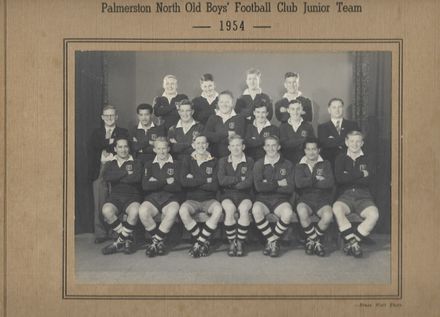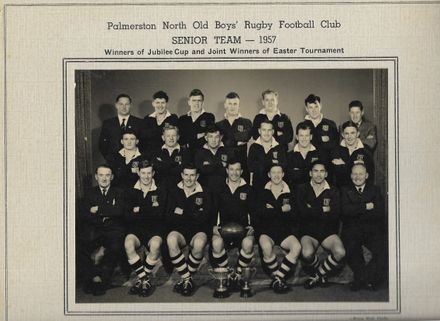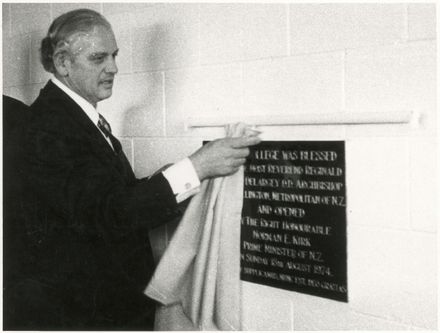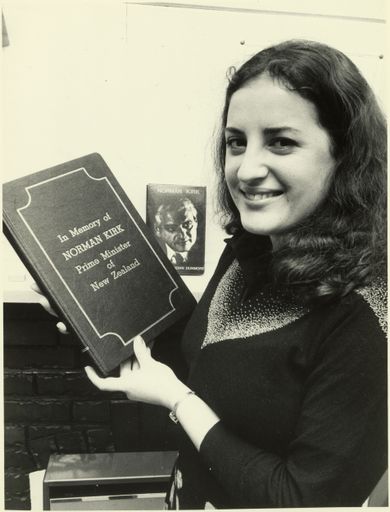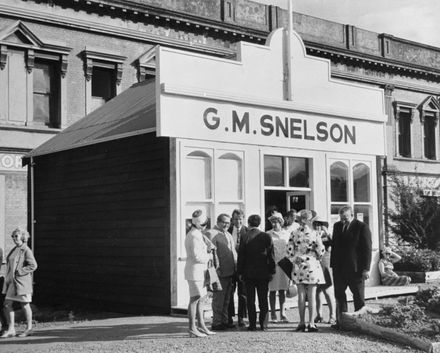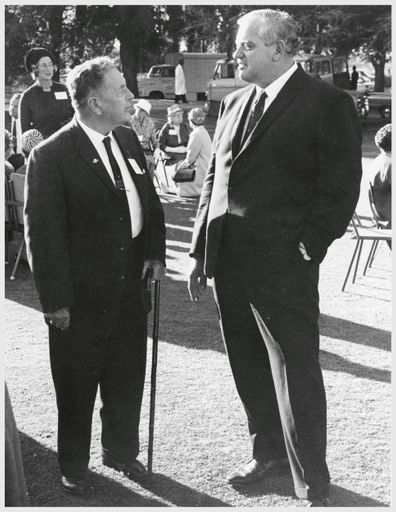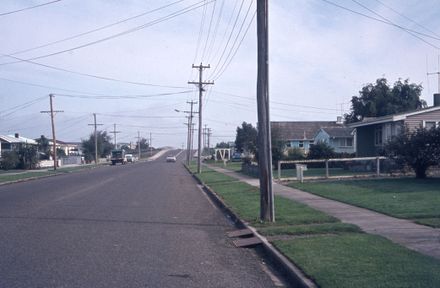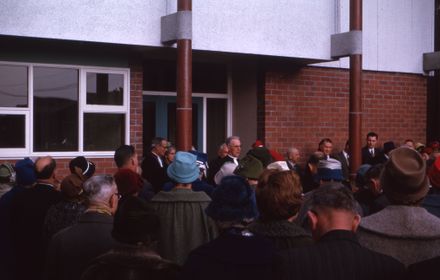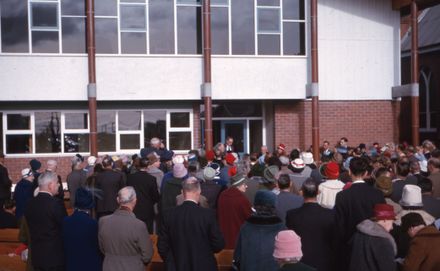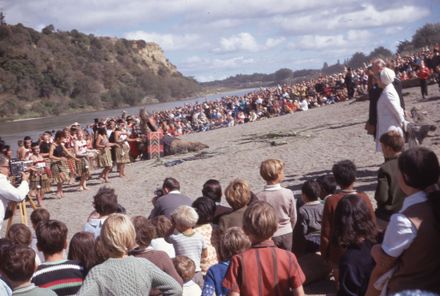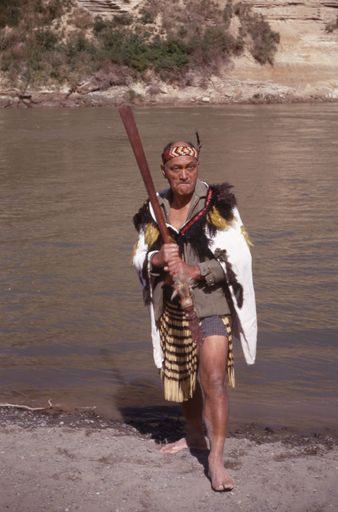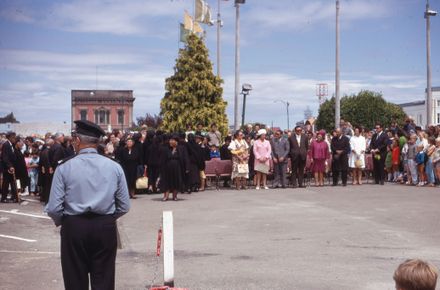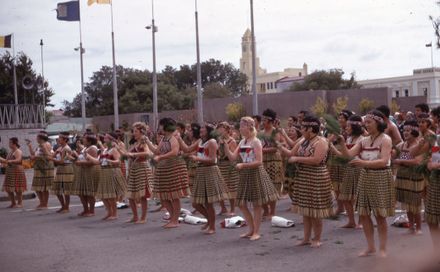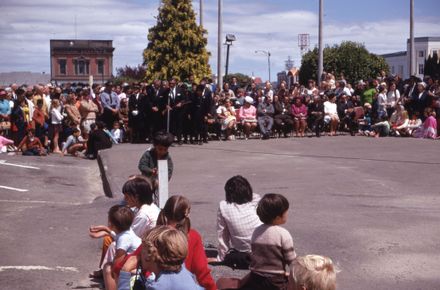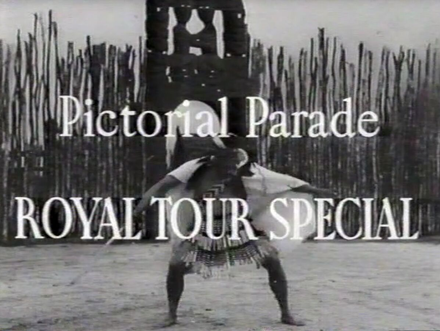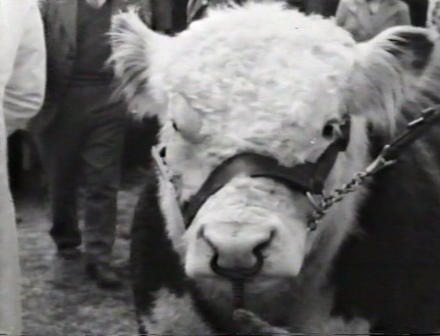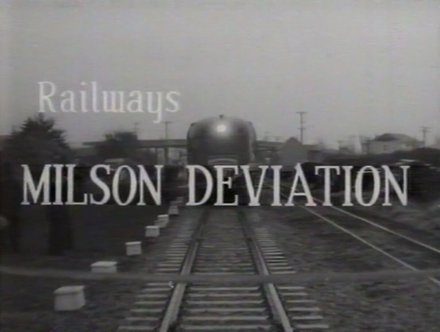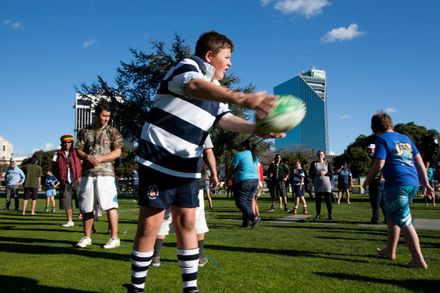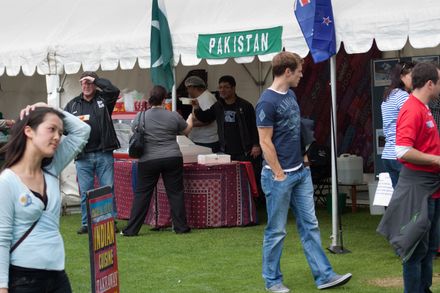Name: Cuba
Suburb, Palmerston North Central
The origin is unknown. It is assumed to be named after Cuba Street in Wellington, which was named after the ship, "Cuba."
The image is a derivative of this Palmerston North Borough map from 1923 by HR Farquar, Civil Engineer and Licensed Surveyor.
The Cuba was a barque of 270-273 tons captained by John Newcombe. The New Zealand Company sent her ahead of immigrant ships from England in July 1839, carrying a survey team of 23 people. The team was led by surveyor-general, Captain William Mein Smith. He had three assistant surveyors, Mr Robert Park, Mr Wellington Carrington and Mr Robert Stokes. Their job was to meet principal of the company, Colonel Edward Gibbon Wakefield who had set out on the Tory two months earlier, make purchases of land and survey it for the colonists to follow.
Other passengers included Mr (Sir) Richard Davies Hanson, Commissioner for the Purchase of Land, and his Assistant Commissioner and native interpreter, Mr William Bath.
During the voyage, the barque called at Porto Praya, Cape Verde Islands, and a party went ashore. A storm made it necessary for Cuba to ride it out at sea for four days. When they regained port to pick up those ashore, yellow fever came aboard. One of the survey team, Mr William Matthews, and Mr W Bath the Assistant Commissioner, died at sea and were committed to the deep.
In September 1839 the larger 500 to 550-ton vessels, Oriental and Aurora, left England carrying 145 and 148 immigrants respectively.
On arrival in New Zealand, Cuba missed meeting Wakefield on the Tory, at Kaipara. The Cuba made its way to the whaling station on Kapiti Island where whaler, Captain George “Jordy” Young, boarded. He then navigated Cuba to Port Nicholson, where a trader named Smith had been deputised by Wakefield to instruct Captain Smith where to proceed surveying. Cuba cast anchor off Pito-one (Petone) foreshore in early January 1840.
Although the Oriental had left England first, Aurora arrived in Port Nicholson a week earlier – docking on 22 January 1840. Both landed immigrants on Pito-one (Petone) beach, where the surveying team had built a small jetty for this purpose.
Municipal History
When Palmerston (later named Palmerston North) was proclaimed a town in 1866, Cuba Street was on the original plan. It first ended at Short Street (now known as Cook Street) and was extended out to Burns Avenue at a much later date. To learn more about the original planning and design of Cuba Street, look at this Back Issues article by Lesley Courtney.
In 1871, Palmerston’s first public cemetery was established on the site of the present Palmerston North Showgrounds. By 1875, a decision was made to move the cemetery to Napier Road, due to the Cuba Street site being too wet. The bodies were exhumed and reinterred at Terrace End Cemetery.
At the November 1878 Palmerston Borough Council meeting, councillor Coleman proposed that tenders be called for forming and metalling Cuba Street. Though it was one of the first streets of the town, it now needed significant attention. Most of the work was expected to be funded in debentures. At the December meeting, the council accepted the tender of Messrs Collins and McCarthy, £148 15s 6d; plus, footpaths and kerbing at £2 7s 3d per chain (chain = 66 feet/20.12 metres) .
In September of 1880 the lowering of the culvert at the junction of George and Cuba Streets, deepened the water table to drain towards the bush. After further lowering of the water table the following month, gravel was spread. In 1881 water was removed from the corner of Cuba Street and Rangitikei Street, leaving a hole to fill. That was addressed when the ordered dray and harness arrived in town. There was work undertaken on the culverts over the next five years.
In October of 1895 Mr Andrew Jack, overseer of waterworks, reported that the sewer in Cuba, and nearby streets, was in a bad way. Sewerage was escaping out the pipe joints as fast as he was running water through the four-inch main. The joints were not cemented, and surrounding shingle was black with discharge. While the report was acknowledged, this wasn’t acted on at the time.
By 1901 the sewerage pipes in Cuba Street were becoming blocked with silt. When they were opened for inspection, interested residents observed there was no cement securing the pipe joints at all.
In 1901, Mr Richard Liron Mestayer, newly appointed engineer for the borough sewerage scheme, was asked to inspect the main sewer and report back to council. By 1906 the plan was ready for laying of sewers in Cuba Street, and a call made for construction tenders. By October that year the pipes were laid, and house connections encouraged. Two years later it was reported that all houses were now connected to the sewerage system in Cuba Street.
Stormwater management was also a challenge in those early years. Plans were needed to intercept and drain surface water. From 1901 work was carried out on water channels and water tables, however it wasn’t until the 1920s that significant progress was made. In 1922 construction of a stormwater conduit accompanied by the laying of nine to twelve-inch drains commenced. Being a long street, the project took time. Concrete kerbing, channelling, pipe laying and sump building continued through until 1930.
The forming of footpaths and ongoing maintenance occurred over the same period. Work was often prompted by residents who also contributed towards costs. Reconditioning was carried out in the portions of Cuba Street with the greatest need. Heavy traffic areas received regular attention.
In the early 1900s the roadway regularly received coats of metal. From 1910 top-dressing with tar and sand commenced, although at times the borough had challenges in sourcing materials. Like the footpaths, Cuba Street work was carried out on one segment of the street at a time. From the 1920s the roadway became more robust with the introduction of macadam foundations and bitumen and chips as top-dressing. After that, ongoing treatment included top-dressing and asphalt patching.
Livestock certainly affected the upkeep of the road. In December of 1906 complaints were made of loose horses being driven, uncontrolled, up the street. Cuba Street was on the suggested livestock route to the Stevens & Gorton sale yards on Rangitikei Street. As late as 1917, a milk supplier complained about mobs of horses galloping up the street and disrupting his early morning deliveries.
Beside road damage and potential dangers, the horses also left droppings along Cuba Street. In 1911 the borough council imported a manual street cleaning machine, purported to do the work of three people. It was so successful in its intended purpose, to clean up horse manure, that a second machine was purchased.
In 1914 complaints were made about the horse dropping receptacles on the corner of Cuba and Rangitikei Streets. They were collecting, water, unpleasant smells, and horse flies. While the borough engineer remedied the water issue, the flies were a result of the nearby sale yards and stables. He supplied the driver of the collecting cart with a canister of chloride of lime for disinfecting purposes.
In 1905, when the council proposed to lease out a borough reserve between Coleman Place (later Coleman Mall) and Cuba Street, the alternate suggestion of a public library, museum and art gallery started to do the rounds. The reserve was comprised of shops and the Fire Brigade Station fronting Coleman Place, and a borough yard fronting Cuba Street. At the time, the Manawatū Philosophical Society ran the Palmerston Museum from a room in the Public Library, opposite the Post Office in Main Street. It was becoming increasing overcrowded with inadequate housing for exhibits. The library was based in the old municipal offices which were considered increasingly unsuitable and unsanitary.
The proposal of a public library, museum and reading room, in either Coleman Place or Cuba Street was reported on by the Library Committee to the borough council in 1908. Initially it seemed that the proposed structure would go ahead. It would be a two-storey building with the library and a woman’s reading room on the ground floor, carrying through to a museum. The upper storey would be a dedicated reading room. Building would commence in Cuba Street and extend to Coleman Place if the opportunity arose. The proposition was carried in council.
Of the funds needed forty percent was already available from an earlier loan to make additions to the current library. A ratepayer’s poll would be taken to raise a special loan for the remaining £2000. A great deal of discussion, debate and alternate proposals ensued.
Much of the discussion centred on the suitability of the Coleman Place site versus the Cuba Street site. Many felt that Coleman Place was the better option, although almost double the building cost. Those in favour argued was that it was central, visible, and more convenient to day travellers by rail. Others were in favour of frontages on both streets from the outset. Alternatively, some councillors and public thought Coleman Place was a business site more suitable for revenue generating stores. Suggestions for a completely different site were also raised.
Meanwhile the borough council wrote to Mr Carnegie asking for a monetary gift of £10,000. Carnegie donations had been received towards the construction of libraries in other towns of Aotearoa New Zealand. Mr Carnegie failed to see why a town of Palmerston North’s size needed such a substantial grant. He requested to see building plans, plus a plan and picture of the current building, including costs. His donations to other Aotearoa New Zealand towns was closer to £2,000-3,000.
The Borough Council applied again in September of 1909, this time for £5,000. However, concerns were raised regarding one of the Pittsburg millionaire’s stipulations. There must be no charge for circulating items. He expected then to be free in accordance with the Public Libraries Act of 1908. Councillors were wary of the library producing no revenue.
There was a well-attended public debate on the issue held at the Orient Hall, 14 June 1910. A letter was finally received back in August of 1910 in which Mr James Bertram, Mr Carnegie’s private secretary, was rather scathing about the proposed building plan and questions around ownership/tenancy of the current library. Mr Carnegie preferred that libraries to which he provided a grant, be under their own auspices on freehold land.
The idea of a Carnegie Library was dropped. This would have been welcome news to local members such as councillor Stubbs. He had once stated that Mr Carnegie’s libraries were not ornamental enough to front a street like Coleman Place.
When the poll was finally released in August 1910, the proposal was to erect a library and museum in Coleman Place and Cuba Street, requiring a special loan of £5,000. In a ratepayers meeting in September, the Coleman Place and Cuba Street site was reaffirmed from an amendment by councillor Durwood. There was never any real opposition to a museum on Cuba Street, the strongest opposition was to a library in Coleman Place. Councillor Edwards proposed an amendment, that the idea of a new library be dropped, it was not the time. The amendment was lost on ratepayer voice. The special loan passed.
Although the loan passed, dissent continued in the council chambers on the appropriate site. In November of 1910 the Manawatū Philosophical Society requested use of the recently vacated Palmerston North Volunteer Fire Brigade Station for the museum. The building could be shifted back from Coleman Place to Cuba Street at an estimated £100 and altered fit for purpose. Two shops could then be built on the Coleman Place frontage. The idea was supported by council and the building moved the following year. The upper storey was allocated to the museum and the lower to the Men’s Social Club. The library remained in the old municipal offices building until 1929.
Late in 1911 the Manawatū Philosophical Society moved the bulk of its treasures to the new museum in the old Fire Brigade Station, Cuba Street. Mr A Hamilton, curator from the Dominion Museum, Wellington, came and provided help, advice, and supervised arrangement of the collections. Palmerston Museum settled into place with meetings held regularly in the museum rooms. In time it became known as the museum building. A downside was that the building was constructed of wood, risking fire damage. Another difficulty was funding. The museum was run solely on the efforts and monies of the Manawatū Philosophical Society with occasional support from local associations such as the Rotary Club.
By 1921 it was obvious that the museum was under resourced and lacking optimum public attendance. Work was required to refresh and relabel the collections. By 1923, the site, which neighboured the Soldier’s Club, was considered a potentially valuable commercial space. In November of that year, the mayor, Mr Frederick Joseph Nathan, suggested removal of the building and commented that the specimens for preservation surely deserved better housing. By 1924 when the council offered the site for a lease of 21 years, the writing was on the wall. Although new proposals were made for a loan towards a purpose-built library and museum, past experience demonstrated this would be a slow process.
In 1926 a delegation from the Philosophical Society proposed that exhibits and debt on the museum be handed to the municipality. It was either this or the collections would have to be stored or dispersed until a fire-proof building became available. The council agree to clear the debt and store collection items. Many of the curios and exhibits were returned to citizens who loaned them. Remaining articles were packed in cases and placed in the city council store. It was a solution that proved timely, in December of 1927 the museum was damaged by fire.
Palmerston North was a city without a museum for the next 45 years, then, in 1971, a museum was opened in a council owned house in Amesbury Street. This led to the establishment of the Manawatū Museum under the directorship of Mrs Mina McKenzie. To learn more, look at Margaret Tennent’s article, Mina McKenzie and the Manawatū Museum.
In 1908 the Manawatū Beautifying Society asked the council to consider planting trees in Cuba Street. The following year the Reserves Committee also suggested planting Cuba Street in trees. As a result, the council and local schools took part in planting efforts each Arbor Day for several years. The last reported Arbor Day planting on Cuba Street was four ash trees in 1914.
With the introduction of motor vehicles, minor collisions occurred occasionally where car meets tree. In October 1929 a decision was made to remove all trees on Cuba Street where the roadway was tarred from kerb to kerb. They were now considered dangerous. Initially, any action was deferred for the opinion of the borough solicitor regarding liability for collisions.
Councillor Fitzherbert also put forward a compelling case opposing destruction of the trees. Given the width of the street he thought the action unwarranted and suggested motorists had a responsibility to drive carefully. He cited strong public sentiment to retain the trees, and suggested light-coloured guards or kerbs be placed around them instead. Another suggestion was the lighting of each tree.
On the vote, the council was equally divided, and the mayor cast the final vote to eliminate the trees. On an early morning in November, the first two trees were cut down to a strong public reaction. Immediate protests led the mayor to rescind the order, subject to a special council meeting. Meanwhile, a protest meeting was attended by over two-hundred residents, regarding planned removal of trees in Broadway, Fitzherbert and Cuba Streets.
During the period, December 1929 to June 1930, there were three claims of damages after motorists had collided with a tree on Cuba Street. In each case the event occurred in the evening on wet roads. The council went to court with the first case and were found liable. The judge noted the tree was unlit and unguarded.
The mayor did note that the last claimant was citing an incident over six months prior.
In April of 1930 the Manawatū Beautifying Society indicated a willingness to work with the council to consider ways and means to minimise any danger from trees. That same month, the borough electrical engineer submitted a report recommending additional lighting in Cuba Street, and other streets with trees. He stated it was impractical to light every tree, and white picket fence surrounds should be enough. In May the council decided to remove only those trees that constituted a ‘menace’, and in June, following inspection, six trees were on the chopping block.
When two of the six trees were cut down, the Beautifying Society offered to fence the remaining ‘menace’ trees with white picket fences at their expense. Two further trees were cut down the following day. The remaining two and an extra tree followed, despite the Beautifying Society bringing a sample fence to the borough council chambers for inspection.
The following month, the trunks of remaining trees in Cuba street were painted a luminous white. This decision by the borough council resulted in a noticeable improvement in visibility.
While not as contentious as the trees, cycle tracks in the street were somewhat fluid. In 1912 cycle tracks were built in Cuba Street. And in 1915 councillor Rolfe suggested something needed to be done to define their existence between Rangitikei and Taonui Streets. However, just a year later, councillor Seifert moved that the track in Cuba Street be discontinued at Taonui Street and a sign posted to indicate this. Further efforts to add cycle tracks were defeated.
While councillor Seifert’s motion does not appear to have been successful, the cycle track from Taonui to Campbell Street was eliminated in 1927, when the road was tarred from kerb to kerb. It was also in 1927 that the proprietor of the new Carlton Hotel successfully had the cycle track abolished from the front of his business. New cycle stands did appear in Cuba Street from time to time.
Apart from a cab stand built opposite the showgrounds in 1909, parking stands for private motor cars did not appear until the 1920s. They were required to deal with overflow from Coleman Place and George Street. The showgrounds also extended parking on both sides of the road to accommodate visitors during events.
At a meeting of Palmerston North ratepayers in 1910, the mayor opened a discussion about public transport; cars, trams or motor buses? It soon became clear that trams or motor buses were preferable to a fleet of cars, but which of the two would be better? Should the town invest in both? A lively debate ensued over the next decade, including the well-attended public debate, Trams v. Motor Buses, at the Opera House in May 1915.
By 1919 the council had laid down preliminary works for an overhead electrical tram system, however a number of councillors recommended this be abandoned. The war had advanced motor bus technology, and buses were now more flexible and cost effective than tramways. Slowly buses gained traction in the council chambers. By April 1920 a proposal for motor buses was under consideration, with a report on petrol vs petrol-electric vs electric. Costs were investigated.
When Mr Matthew H Oram, a strong proponent of motor buses, was elected to council, he took that as a public mandate that ratepayers were also in favour. In June 1920 councillor Oram moved that ratepayers be asked to sanction a £9000 loan to purchase and equip four motor buses. It was carried, and the resulting public poll in September supported the purchase. The council subsequently received nineteen quotations to build and supply the buses.
In August 1921, the building of a municipal bus barn was completed in Cuba Street. It was situated on the Education Reservation between Short Street (later Cook Street) and Palermes Street (later Bryant Street). Despite the theft of eight cases of benzine during the journey from Napier, four highly anticipated municipal buses arrived in Te Marae o Hine the Square, on 6 September 1921. Almost immediately there were calls to make extensions to the bus barn and purchase more buses.
A new bus barn was built at the Scandia Street (later Albert Street) borough depot in 1927.
The Cuba Street building became known as the old bus barn. From 1932 it was used by the Takaro Scouts, as a youth employment centre, and to receive donated goods to relieve distress in the town. In 1935 the Education Board, who owned the land, requested its demolition and removal.
In December 1935, the Takaro Boy Scout Committee inquired as to whether they might use the timber and iron from the demolition to build a scout hall. The committee was advised that the materials were unavailable, as they had been earmarked for the building of the council stables in Manawatū Street. The old bus barn was demolished, and the timber and iron removed to the borough depot in 1936.
It was in 1908, that the Pascal brothers first looked at extending Cuba Street. To build and access Palermes Street, Messrs Pascal Bros first needed to extend Cuba Street beyond Short Street (later Cook Street) and through the Education Reserve. The reserve was leased to the Manawatū and West Coast Agricultural and Pastoral (A&P) Association by the Education Commissioner.
Messrs Pascal Bros agreed to transfer property to the A&P Association, which would allow the association to extend their grounds alongside Pascal Street and provide access from the rear. In exchange, the brothers would have the right to form Cuba Street through the Education Reserve.
In 1908, this was originally permitted by the Education Commissioner, but did not proceed at the time.
Once fresh negotiations commenced in 1912, the Education Reserve had passed into the hands of the Wellington Land Board. When the Land Board refused permission, a petition was made to parliament by A&P Association members. The government, led by Prime Minister Massey, issued permission and the transfer proceeded.
In October 1912 the Borough Council gave consent for the extension of Cuba Street and construction of a new street, connecting to the Cuba Street extension. The work commenced in 1913 by Mr Edward John Armstrong and Palermes Street was ready to be taken over in 1914. That year there was also discussion around extending Cuba Street all the way to Kairanga Road (later Botanical Road), however this did not eventuate.
In 1925 F Needham, Ltd. gained permission to construct streets through the Pascal Block. From the outset Mr Frederick Needham made it clear that these would not be private streets. They would be following by-laws to the laying out of public streets. Cuba Street was further extended, and Burns Avenue constructed at its end. Lyndhurst Street (called Lyndhurst Street extension for some years after) was continued from Chelwood Street to meet the new Cuba Street extension.
Further information
Renumbering
The addresses on Cuba Street were renumbered in 1938. See p.79 to p.83 of the Rates Register of Street Numbers - Old and New.
Built Heritage Inventory
- Bryant Building, 201-207 Cuba Street, 1905, 1911, 1915.
- Carlton Hotel, 169-199 Cuba Street, 1927.
- The Palmerston North Working Men's Club, 233 Cuba Street, 1928. The main entry was on Cuba Street with the lounge bar and some other spaces on Taonui Street.
- Returned Soldiers Club, 236 Cuba Street, 1917. The former Soldiers' Club became a Poppy Place in 2018.
- Mowlem Building, 268-270 Cuba Street, 1925.
- The Arcade, 256-258 Cuba Street, 1906.
- Ward Bros. Building, 213-215 Cuba Street, 1935.

